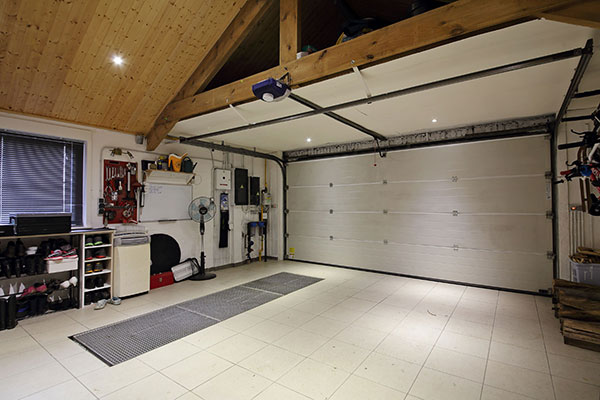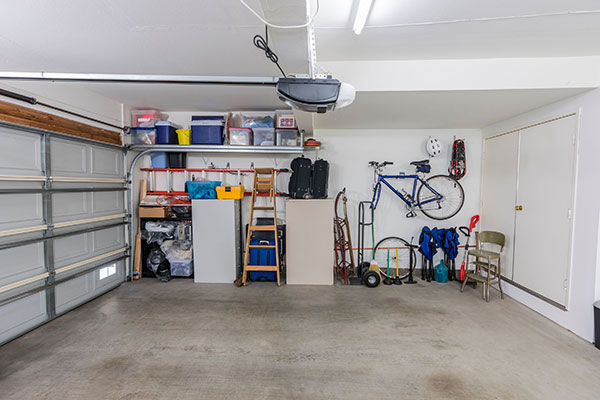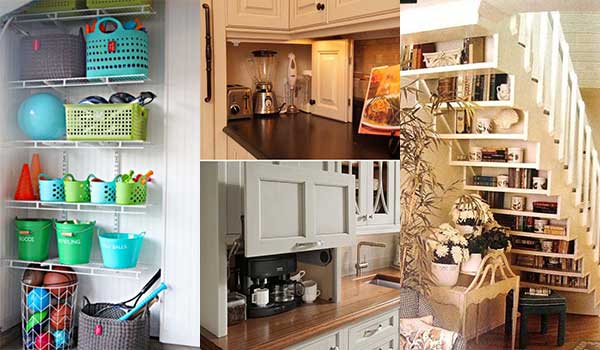5 Tips For An Eco-Friendly Garage

Have you ever thought about how to make your garage eco-friendlier? Many are aware of how daily activities impact the environment. Still, when it comes to garages, some often overlook the potentially harmful effects of neglecting them. You can make your garage a more sustainable space with a few simple changes.
In this article, you’ll discover tips on creating an eco-friendly garage and find ideas that are both budget-friendly and helpful for the environment. So, get started and give your garage a greener makeover.
- Install An Eco-Friendly Door
Installing an eco-friendly door is the first tip to making your garage eco-friendly. It means choosing a garage door that won’t waste energy when it opens and closes but also uses sustainable materials. Consider a steel-clad insulated door, which helps keep the temperature in your garage stable, so you don’t have to adjust constantly for changes in the season.
Plus, with steel, you can design your new home perfectly to fit your lifestyle or use recycled materials like corrugated metal sheets or shingles from reclaimed barns. Whatever you choose, an eco-friendly door is vital for a greener and more sustainable garage.

- Use Recycled Or Reclaimed Building Materials
One of the best and most impactful things you can do is to use recycled or reclaimed building materials. Using recycled materials for your garage, such as reclaimed wood or bricks from old buildings, is an excellent way of reducing the need for new resources. Furthermore, these materials look great and have unique characteristics that make them stand out.
Many companies offer a range of products made from recycled or sustainable materials. You can also find salvaged materials that can be used as part of your project, such as doors, windows, flooring, and more. Another great idea is to use sustainable paints and coatings for walls, floors, and other surfaces; to help reduce your carbon footprint.
These options are great for the environment and can help save you money on your project. If you want to make your garage eco-friendly, consider using recycled or reclaimed building materials; it’s a win-win.
- Invest In Energy Efficient Lighting
When creating an eco-friendly garage, investing in energy-efficient lighting is vital. Ensure your lighting is up-to-date, modern, and designed with the environment in mind. You can choose from various options, such as LED lights, motion sensors, and solar-powered lamps.
Not only will these energy-efficient lighting options help reduce your energy bills, but they will also help protect the environment by reducing greenhouse gasses and other pollutants. Furthermore, motion sensors significantly reduce wasted energy when no one is in the garage.
No matter which type of energy-efficient lighting you choose, you’ll be helping the environment and making your home greener. Besides saving money on electricity bills, you’ll also decrease human activity’s impact on global climate change. So what are you waiting for? Investing in eco-friendly lighting can be an easy way to ensure your garage does its part for the planet.
- Limit Moisture Buildup With Proper Ventilation
One of the essential tips for having an eco-friendly garage is to limit moisture buildup with proper ventilation. It’s a fact that dampness in your garage can cause health issues, structural damage, and mold growth. To avoid this, ensure your garage is ventilated adequately to keep the air fresh and circulate warm and cool, preventing any moisture buildup.
Fortunately, there are several ways to ensure proper ventilation. You could install a fan or two or fit an air vent into one of the walls to open it.
You should also invest in a dehumidifier that can absorb excess moisture from the air and keep your garage dry. This type of equipment is widely available and inexpensive, so it’s worth considering whether your garage tends to get damp and stuffy on hot days.
You could go one step further by installing a ceiling fan to increase the amount of air circulation and reduce condensation on surfaces such as tools and furniture. Ventilating the space properly will help make your garage eco-friendly and ensure it’s healthy for everyone using it.
- Insulate And Weatherize Your Garage Door
If you have an attached garage, this is especially important as your door generates a lot of heat transfer into and out of your home. To ensure it isn’t wasting valuable energy, insulating and weatherizing your garage door can help reduce energy costs and ensure your home is comfortable all year round.
- Install Weatherstripping
Installing a weatherstrip between the bottom of the door and the threshold will reduce drafts and keep warm air during winter. Installing it along the sides and top of the door will also help limit air leaks when it’s closed.
- Add Caulk
Adding caulk around the outside frame of the garage door can also help reduce energy waste. It will help create an even tighter seal around the edge, keeping cold air out and hot air in during winter, as well as keeping cool air in during summer.
- Install Insulation Kits
You can purchase insulation kits online or from your local hardware store for garage doors. These kits include unique foam panels easily installed onto the back of your garage door. These are manufactured to fit many different sizes and types of doors, so you should be able to find one that works for you.
Insulating and weatherizing your garage door can significantly reduce energy waste while helping keep your home comfortable during cold or hot temperatures outside.
Conclusion
It’s important to remember that it’s never too late to make your garage eco-friendlier. With these tips in mind, you can go a long way toward creating a better space for the environment and making a positive difference.
From switching to energy-efficient lighting to bringing in a recycling bin, you can make plenty of small changes that will significantly impact you. Creating the eco-friendly garage of your dreams requires a little time and effort.



